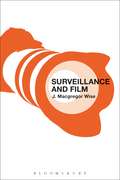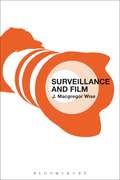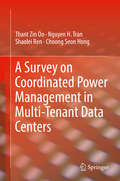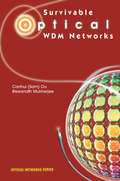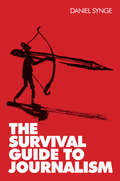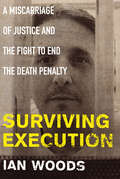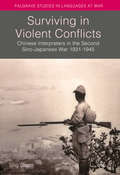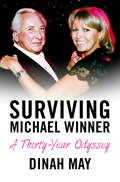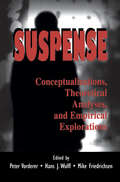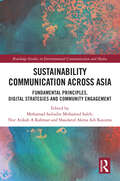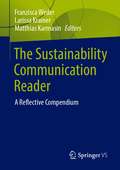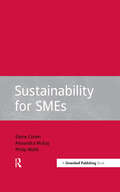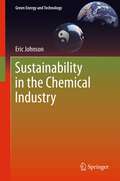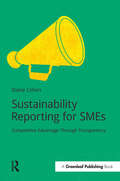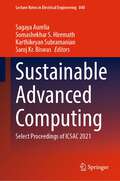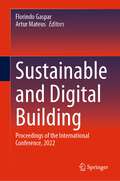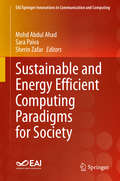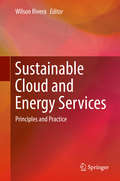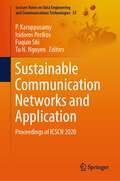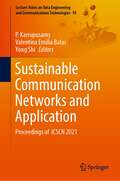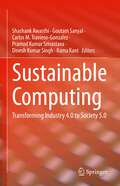- Table View
- List View
Surveillance and Film
by J. Macgregor WiseWinner of the Surveillance Studies Network Book Award: 2017Surveillance is a common feature of everyday life. But how are we to make sense of or understand what surveillance is, how we should feel about it, and what, if anything, can we do? Surveillance and Film is an engaging and accessible book that maps out important themes in how popular culture imagines surveillance by examining key feature films that prominently address the subject. Drawing on dozens of examples from around the world, J. Macgregor Wise analyzes films that focus on those who watch (like Rear Window, Peeping Tom, Disturbia, Gigante, and The Lives of Others), films that focus on those who are watched (like The Conversation, Caché, and Ed TV), films that feature surveillance societies (like 1984, THX 1138, V for Vendetta, The Handmaid's Tale, The Truman Show, and Minority Report), surveillance procedural films (from The Naked City, to Hong Kong's Eye in the Sky, The Infernal Affairs Trilogy, and the Overheard Trilogy of films), and films that interrogate the aesthetics of the surveillance image itself (like Sliver, Dhobi Ghat (Mumbai Diaries), Der Riese, and Look). Wise uses these films to describe key models of understanding surveillance (like Big Brother, Panopticism, or the Control Society) as well as to raise issues of voyeurism, trust, ethics, technology, visibility, identity, privacy, and control that are essential elements of today's culture of surveillance. The text features questions for further discussion as well as lists of additional films that engage these topics.
Surveillance and Film
by J. Macgregor WiseWinner of the Surveillance Studies Network Book Award: 2017Surveillance is a common feature of everyday life. But how are we to make sense of or understand what surveillance is, how we should feel about it, and what, if anything, can we do? Surveillance and Film is an engaging and accessible book that maps out important themes in how popular culture imagines surveillance by examining key feature films that prominently address the subject. Drawing on dozens of examples from around the world, J. Macgregor Wise analyzes films that focus on those who watch (like Rear Window, Peeping Tom, Disturbia, Gigante, and The Lives of Others), films that focus on those who are watched (like The Conversation, Caché, and Ed TV), films that feature surveillance societies (like 1984, THX 1138, V for Vendetta, The Handmaid's Tale, The Truman Show, and Minority Report), surveillance procedural films (from The Naked City, to Hong Kong's Eye in the Sky, The Infernal Affairs Trilogy, and the Overheard Trilogy of films), and films that interrogate the aesthetics of the surveillance image itself (like Sliver, Dhobi Ghat (Mumbai Diaries), Der Riese, and Look). Wise uses these films to describe key models of understanding surveillance (like Big Brother, Panopticism, or the Control Society) as well as to raise issues of voyeurism, trust, ethics, technology, visibility, identity, privacy, and control that are essential elements of today's culture of surveillance. The text features questions for further discussion as well as lists of additional films that engage these topics.
A Survey on Coordinated Power Management in Multi-Tenant Data Centers
by Thant Zin Oo Nguyen H. Tran Shaolei Ren Choong Seon HongThis book investigates the coordinated power management of multi-tenant data centers that account for a large portion of the data center industry. The authors include discussion of their quick growth and their electricity consumption, which has huge economic and environmental impacts. This book covers the various coordinated management solutions in the existing literature focusing on efficiency, sustainability, and demand response aspects. First, the authors provide a background on the multi-tenant data center covering the stake holders, components, power infrastructure, and energy usage. Then, each power management mechanism is described in terms of motivation, problem formulation, challenges and solution.
Survivable Optical WDM Networks (Optical Networks)
by Canhui (Sam) Ou Biswanath MukherjeeCovers these key topics: Shared-mesh protection for optical WDM networks. Survivable traffic grooming for hierarchical optical WDM networks. Survivable data over next-generation SONET/SDH with inverse multiplexing.
The Survival Guide to Journalism (UK Higher Education OUP Humanities & Social Sciences Media, Film & Cultural Studies)
by Dan Synge"This is brilliant! A must-read for anyone thinking about going into journalism or already there. The recurring Q&A style is really helpful - the author really did pre-empt all my various questions. As someone who is deciding whether to go into journalism or not - this is the only book I have come across so far which has actually been helpful and fun to read at the same time. What I liked best is that the book is fun without being patronising - a lot of journo books are stuffy, outdated or intimidating. Importantly it tackles all the current issues about journalism becoming multi-platform, with advice on blogging etc.And although encouraging, it is realistic enough to make sure you don't see journalism through rose-tinted glasses - it really made me think hard about whether I would survive as a journalist. I would definitely recommend this to anyone thinking of starting out or starting out in journalism - it's essentially a journalism course in a nutshell!" Katherine Lough"The best bit about this book, as opposed to others about journalism (of which there are many), is that it is written in a friendly and non-intimidating style. As a journalism student I have spent many hours poring over books that judge me for wanting to write about the 'soft stuff', whereas Synge actually gives tips on how to break into celebrity gossip or arts reviewing. The advice sections from real working journalists in different sectors and publications are really helpful, as they give a (realistic!) insight into the profession and hold up all the best bits, while conveying the disadvantages to life as a scribe. Synge's tips and hints are relevant, especially the bits about online journalism and how journalists have to be multi-skilled today. What I found most interesting was the chapters on freelancing ... Overall, I would recommend this book to anyone hoping to be a journalist, studying to be a journalist or working as a journalist."H StuartThis essential survival manual to print and online media journalism explores the personal qualities and skills needed to break into this exciting but often uncertain field. It considers the current state of expanding media, routes into the industry, and the pros and cons of being a staff journalist or freelance. Helpful coverage includes:Practical hands-on advice on news and feature writing plus specialist areas such as profile writing, reviewing and blogging Useful tips and advice from top working professionalsUp-to-date information on where the best opportunities areExercises, easy-to-follow checklists and short Q&A sessionsThe author draws on his own extensive experience in the field and suggests useful links to organisations that specialise in helping aspiring journalists to survive through those difficult first months and years.The Survival Guide to Journalism is an essential reference for any aspiring journalist. It will be key reading for journalism students and anyone interested in making a living through their writing and editorial skills.
Surviving Execution: A Miscarriage of Justice and the Fight to End the Death Penalty
by Ian Woods"Compelling... This is a captivating account of Glossip's fight for truth." -- Sir Richard BransonA tense mix of Dead Man Walking and Making a Murderer, Surviving Execution combines the very best in true-crime writing with a searching exploration of our most barbaric punishment.Imagine being condemned to death for murder, when even the prosecutors admit that you didn't actually kill anyone. This is what happened to Richard Glossip, a death-row inmate who was found guilty of murdering motel owner, Barry van Treese. Despite being convicted on the word of the actual self-confessed killer, the state of Oklahoma is still intent on executing him, raising international outcry and controversy. Ian Woods, a reporter for Sky News in the UK, came across the case one quiet afternoon, and has tirelessly campaigned ever since to bring the injustices Glossip has faced to the world's attention. He even served as an invited witness to Glossip's three scheduled executions - all of which were stayed at the last possible moment. This is the gripping true story of the case, and their turbulent friendship, written by a man with unparalleled first-hand knowledge and access.
Surviving in Violent Conflicts: Chinese Interpreters in the Second Sino-Japanese War 1931–1945 (Palgrave Studies in Languages at War)
by Ting GuoThis book examines the relatively little-known history of interpreting in the Second Sino-Japanese War (1931-45). Chapters within explore how Chinese interpreters were trained and deployed as an important military and political asset by competing domestic and international powers, including the Chinese Nationalist Government (Kuomingtang), the Chinese Communist Party and Japanese forces. Drawing from a wide range of sources, including archives in mainland China and Taiwan, memoirs and interviews with former military interpreters, it discusses how the interpreting profession was affected by shifts of foreign policy and how interpreters’ professional habitus was formed through their training and interaction with other social agents and institutions. By investigating individual interpreters’ career development and border-crossing strategies, it questions the assumption of interpreting as an exclusive profession and highlights interpreters’ active position-taking as a strategy of self-protection, a route to power, or just a chance of a better life.
Surviving Michael Winner: A Thirty-Year Odyssey
by Dinah MayThey say you can tell a lot about a person from how they treat their employees. In the case of Michael Winner, the relationship with his personal assistant, Dinah May, tells us a great deal indeed. In his life, Winner was known publicly as many things: a director, producer and the outspoken food critic who could make or break a restaurant with just a few choice words in his compelling Sunday Times 'Winner's Dinners' column. But behind the opulence and charm, the glamour and the glitz, lies the explosive untold story of fiery outbursts and scorching tirades, brought to life here in vivid colour by the one woman who remained a constant in his life. Impulsive, unpredictable and obsessed with the spotlight, though generous, witty and unshakably loyal - if life alongside Winner was to be at the centre of a storm, on a constant roller coaster, then Dinah May was at its epicentre and holding on for dear life. For thirty years the former Miss Great Britain was by Winner's side, on film sets, studios, abroad with famous friends or at his home, witnessing first-hand the two very different sides of his life, character and temperament. It was with Michael's blessing, and, indeed, encouragement, that she leave nothing out from their story ('Tell them everything') and in this affectionate but candid, no-holds-barred exposé, Dinah certainly doesn't disappoint...
Suspense: Conceptualizations, Theoretical Analyses, and Empirical Explorations (Routledge Communication Series)
by Peter Vorderer Hans J. Wulff Mike FriedrichsenThis volume begins with the general assumption that suspense is a major criterion for both an audience's selection and evaluation of entertaining media offerings. This assumption is supported not only by the popularity of suspenseful narratives, but also by the reasons users give for their actual choice of media contents. Despite this, there is no satisfying theory to describe and explain what suspense actually is, how exactly it is caused by films or books, and what kind of effect it has on audiences. This book's main objective is to provide that theory by bringing together scholars from different disciplines who are working on the issue. The editors' goal is to reflect the "state of the art" as much as it is to highlight and encourage further developments in this area. There are two ways of approaching the problem of describing and explaining suspense: an analysis of suspenseful texts or the reception process. Researchers who follow the more text-oriented approach identify the uncertainty of the narrative outcome, the threat or danger for the protagonist, the play with time delay, or other factors as important and necessary for the production of suspense. The more reception-oriented scholar focuses on the cognitive activities of audiences, readers' expectations, the curiosity of onlookers, their emotions, and their relationships with the protagonists. A correspondence between the two seems to be quite difficult, though necessary to determine. Both perspectives are important in order to describe and explain suspense. Thus, the editors utilize the thesis that suspense is an activity of the audience (reader, onlooker, etc.) that is related to specific features and characteristics of the text (books, films, etc.). Their question is: What kind of relation? The answer comes from finding out how, why, and which elements of the text cause effects that are experienced as suspense. Scholars from semiotics, literary criticism, cultural studies, and film theory assess the problem from a text-oriented point of view, dealing primarily with the how and which. Other scholars present the psychological perspective by focusing on the cognitive and emotional processes that underlie viewers' experience of suspense; that is, the reception theory tries to answer the question of why suspenseful texts may be experienced as they are.
Suspense: Conceptualizations, Theoretical Analyses, and Empirical Explorations (Routledge Communication Series)
by Peter Vorderer Hans Jürgen Wulff Mike FriedrichsenThis volume begins with the general assumption that suspense is a major criterion for both an audience's selection and evaluation of entertaining media offerings. This assumption is supported not only by the popularity of suspenseful narratives, but also by the reasons users give for their actual choice of media contents. Despite this, there is no satisfying theory to describe and explain what suspense actually is, how exactly it is caused by films or books, and what kind of effect it has on audiences. This book's main objective is to provide that theory by bringing together scholars from different disciplines who are working on the issue. The editors' goal is to reflect the "state of the art" as much as it is to highlight and encourage further developments in this area. There are two ways of approaching the problem of describing and explaining suspense: an analysis of suspenseful texts or the reception process. Researchers who follow the more text-oriented approach identify the uncertainty of the narrative outcome, the threat or danger for the protagonist, the play with time delay, or other factors as important and necessary for the production of suspense. The more reception-oriented scholar focuses on the cognitive activities of audiences, readers' expectations, the curiosity of onlookers, their emotions, and their relationships with the protagonists. A correspondence between the two seems to be quite difficult, though necessary to determine. Both perspectives are important in order to describe and explain suspense. Thus, the editors utilize the thesis that suspense is an activity of the audience (reader, onlooker, etc.) that is related to specific features and characteristics of the text (books, films, etc.). Their question is: What kind of relation? The answer comes from finding out how, why, and which elements of the text cause effects that are experienced as suspense. Scholars from semiotics, literary criticism, cultural studies, and film theory assess the problem from a text-oriented point of view, dealing primarily with the how and which. Other scholars present the psychological perspective by focusing on the cognitive and emotional processes that underlie viewers' experience of suspense; that is, the reception theory tries to answer the question of why suspenseful texts may be experienced as they are.
Sustainability Communication across Asia: Fundamental Principles, Digital Strategies and Community Engagement (Routledge Studies in Environmental Communication and Media)
by Mohamad Saifudin Mohamad Saleh, Nur Atikah A Rahman and Shaidatul Akma Adi KasumaSustainability Communication across Asia distils the core components of environmental communication in the diverse milieu of Asian nations such as Indonesia, Malaysia, the Philippines, Thailand, and China. The chapters in this book engage readers in a clear-sighted view of issues, challenges, and strategies related to sustainability communication in Asia, examining fundamental principles, digital strategies, and the role of language, as well as community engagement. The first part of the book features underpinning ideologies of sustainability communication. The authors go on to explore the prevalent trends and approaches in sustainable communication in the digital realm, examining the internet in general, social media, and gaming platforms. Finally, the book discusses the green efforts adopted among selected Asian communities, the role of communication, and the resulting societal impacts. Readers will be introduced to many related examples of Asian sustainability cases and issues that may differ from Western experiences. Interesting topics such as environmental gamification, edutainment and sustainability communication, and social media and sustainability are among those presented and elaborated at length by 21 writers with industrial and academic backgrounds. Practical and inspiring, this book will be of great interest to students and scholars of sustainability and environmental communication, and Asian studies in general.
Sustainability Communication across Asia: Fundamental Principles, Digital Strategies and Community Engagement (Routledge Studies in Environmental Communication and Media)
by Mohamad Saifudin Mohamad Saleh Nur Atikah A. Rahman Shaidatul Akma Adi KasumaSustainability Communication across Asia distils the core components of environmental communication in the diverse milieu of Asian nations such as Indonesia, Malaysia, the Philippines, Thailand, and China. The chapters in this book engage readers in a clear-sighted view of issues, challenges, and strategies related to sustainability communication in Asia, examining fundamental principles, digital strategies, and the role of language, as well as community engagement. The first part of the book features underpinning ideologies of sustainability communication. The authors go on to explore the prevalent trends and approaches in sustainable communication in the digital realm, examining the internet in general, social media, and gaming platforms. Finally, the book discusses the green efforts adopted among selected Asian communities, the role of communication, and the resulting societal impacts. Readers will be introduced to many related examples of Asian sustainability cases and issues that may differ from Western experiences. Interesting topics such as environmental gamification, edutainment and sustainability communication, and social media and sustainability are among those presented and elaborated at length by 21 writers with industrial and academic backgrounds. Practical and inspiring, this book will be of great interest to students and scholars of sustainability and environmental communication, and Asian studies in general.
The Sustainability Communication Reader: A Reflective Compendium
by Larissa Krainer Matthias Karmasin Franzisca WederThe Textbook seeks for an innovative approach to Sustainability Communication as transdisciplinary area of research. Following the United Nations Sustainable Development Goals, which are intended to transform the world as it is known, we seek for a multidisciplinary discussion of the role communication plays in realizing these goals. With complementing theoretical approaches and concepts, the book offers various perspectives on communication practices and strategies on an individual, organizational, institutional, as well as public level that contribute, enable (or hinder) sustainable development. Presented case studies show methodological as well as issue specific challenges in sustainability communication. Therefore, the book introduces and promotes innovative methods for this specific area of research.
Sustainability for SMEs
by Elaine Cohen Alexandra McKay Philip WolfeSustainability for SMEs offers a comprehensive introduction to the key business cases and techniques for putting sustainability at the heart of your business strategy.Small businesses make a significant collective impact on the environment and society – but only a tiny percentage of SMEs complete a sustainability report. Sustainability Reporting for SMEs will enable any SME to get up to speed on sustainability reporting and plot a course of action for their business. Elaine Cohen distils the latest and best thinking on sustainability reporting for SMEs, and offers a process for reporting that will deliver significant business advantage, both in terms of more effective internal processes and in terms of reputation, customer loyalty and business-building.In many SMEs sustainability is one person’s passion and responsibility. A large part of their job becomes selling sustainability to other people in the business. Strategic Sustainability offers arguments, information and tactics that will help that person get the buy-in they need to move sustainability forward in their business. Sustainability is of strategic importance to a business. This book makes an airtight case for why action is essential and how sustainability can help a business not only survive but thrive in competitive marketplaces.The major environmental impact of most businesses derives from energy usage. There are many ways to make your organisation's energy usage more sustainable. In Sustainable Energy Options for Business, Philip Wolfe outlines the best available options for (1) reducing energy use and (2) improving the sustainability of energy supply. After an introduction to regulatory drivers and management issues, Wolfe looks at energy opportunities in five key areas.
Sustainability for SMEs: Competitive Advantage Through Transparency (Doshorts Ser.)
by Elaine Cohen Alexandra McKay Philip WolfeSustainability for SMEs offers a comprehensive introduction to the key business cases and techniques for putting sustainability at the heart of your business strategy.Small businesses make a significant collective impact on the environment and society – but only a tiny percentage of SMEs complete a sustainability report. Sustainability Reporting for SMEs will enable any SME to get up to speed on sustainability reporting and plot a course of action for their business. Elaine Cohen distils the latest and best thinking on sustainability reporting for SMEs, and offers a process for reporting that will deliver significant business advantage, both in terms of more effective internal processes and in terms of reputation, customer loyalty and business-building.In many SMEs sustainability is one person’s passion and responsibility. A large part of their job becomes selling sustainability to other people in the business. Strategic Sustainability offers arguments, information and tactics that will help that person get the buy-in they need to move sustainability forward in their business. Sustainability is of strategic importance to a business. This book makes an airtight case for why action is essential and how sustainability can help a business not only survive but thrive in competitive marketplaces.The major environmental impact of most businesses derives from energy usage. There are many ways to make your organisation's energy usage more sustainable. In Sustainable Energy Options for Business, Philip Wolfe outlines the best available options for (1) reducing energy use and (2) improving the sustainability of energy supply. After an introduction to regulatory drivers and management issues, Wolfe looks at energy opportunities in five key areas.
Sustainability in the Chemical Industry (Green Energy and Technology)
by Eric JohnsonIt’s the new rock and roll. It’s the new black. Sustainability is trendy, and not just among hipsters and pop stars. The uncool chemical sector helped pioneer it, and today, companies inside and outside the sector have embraced it. But what have they embraced? Surely not the Brundtland definition of meeting “the needs of the present without compromising the ability of future generations to meet their own needs.” Sustainability describes a change in the chemical industry’s approach to the external world: to regulators, to greens, to neighbors, to investors and to the general public. Displacing the adversarialism of the 1970s-80s, sustainability is a new approach to social/political conflict, and an attempt to rebuild the industry’s long-suffering public image. In practice, it consists of:A ‘stakeholder’ approach to communications and external relationsA rebranding of regulatory compliance and risk management, with the emphasis on their benefits to stakeholdersRecognition (and even celebration) of the opportunities, not just the costs, of environmental and social protectionThe core of this book is a survey of the world’s 29 largest chemical companies: how they put sustainability into action (six of the 29 do not), and the six ‘sustainability brands’ they have created. It begins with a history of stakeholders conflict, before looking at various definitions of sustainability – by academics, by the public and by investors. After the survey and analysis, the book covers sustainability and ‘greenwash’ plus the ROI of sustainability, and it gives five recommendations.
Sustainability Reporting for SMEs: Competitive Advantage Through Transparency
by Elaine CohenSustainability reporting can help companies make more money. Sustainability Reporting for SMEs shows you how. Reporting, done well, requires a company to make public a set of promises that bind the company to its sustainability commitments. By adopting a transparent approach to both business practice and reporting, SMES can gain significant business advantage, both in terms of more effective internal processes and in terms of reputation and business-building.Elaine Cohen provides guidance and tools for actual actions that will improve the sustainability impacts of your company, and a process for reporting that adds value which is much greater than the printed or online report itself. This book will help SMEs develop "the transparency habit" so that they both make more money and contribute more proactively to the sustainability of our society and planet.It is vital reading for SME owners and managers, entrepreneurs, business and sustainability students and teachers, and consultants. Sustainability managers in larger organisations will find this book helpful in assisting their organisations manage their supply chains which undoubtedly include several SMEs.
Sustainability Reporting for SMEs: Competitive Advantage Through Transparency (Doshorts Ser.)
by Elaine CohenSustainability reporting can help companies make more money. Sustainability Reporting for SMEs shows you how. Reporting, done well, requires a company to make public a set of promises that bind the company to its sustainability commitments. By adopting a transparent approach to both business practice and reporting, SMES can gain significant business advantage, both in terms of more effective internal processes and in terms of reputation and business-building.Elaine Cohen provides guidance and tools for actual actions that will improve the sustainability impacts of your company, and a process for reporting that adds value which is much greater than the printed or online report itself. This book will help SMEs develop "the transparency habit" so that they both make more money and contribute more proactively to the sustainability of our society and planet.It is vital reading for SME owners and managers, entrepreneurs, business and sustainability students and teachers, and consultants. Sustainability managers in larger organisations will find this book helpful in assisting their organisations manage their supply chains which undoubtedly include several SMEs.
Sustainable Advanced Computing: Select Proceedings of ICSAC 2021 (Lecture Notes in Electrical Engineering #840)
by Sagaya Aurelia Somashekhar S. Hiremath Karthikeyan Subramanian Saroj Kr. BiswasThis volume presents select proceedings of the International Conference on Sustainable Advanced Computing (ICSAC – 2021). It covers the latest research on a wide range of topics spanning theory, systems, applications, and case studies in advanced computing. Topics covered are machine intelligence, expert systems, robotics, natural language processing, cognitive science, quantum computing, deep learning, pattern recognition, human-computer interface, biometrics, graph theory, etc. The volume focuses on the novel research findings and innovations of various researchers. In addition, the book will be a promising solution for new generation-based sustainable, intelligent systems that are machine and human-centered with modern models and appropriate amalgamations of collaborative practices with a general objective of better research in all aspects of sustainable advanced computing.
Sustainable and Digital Building: Proceedings of the International Conference, 2022
by Florindo Gaspar Artur MateusThis book presents the Proceedings of the International Conference on Sustainable and Digital Building, at Marinha Grande, Portugal held in October 2022. The Conference created a forum for discussion of a range topics on this broad area, including building materials, building processes, digital technologies, and building sustainability. A major focus of the collection is green building throughout a structure’s life-cycle—from planning to design, construction, operation, maintenance, renovation, and demolition. In addition, the Conference examined industry making the transition to digital transformation of buildings, a key benchmark to realizing European climate goals and achieving net-zero carbon buildings by 2050.
Sustainable and Energy Efficient Computing Paradigms for Society (EAI/Springer Innovations in Communication and Computing)
by Mohd Abdul Ahad Sara Paiva Sherin ZafarThis book provides insights into recent trends and innovation of technologies aiming to provide sustainable and energy efficient computing. The authors discuss approaches to provide solutions to real life societal issues and problems using sustainable and energy efficient computing approaches. The book gathers research and state of the art reviews on solutions for societal benefits by using sustainable approaches of computing. The book also intends to provide use-cases for certain real life societal problems. The book can be used by researchers of similar areas, technologists, environmentalists, educationists, research scholars and UG/PG Students as well.
Sustainable Cloud and Energy Services: Principles and Practice
by Wilson RiveraThis is the first book entirely devoted to providing a perspective on the state-of-the-art of cloud computing and energy services and the impact on designing sustainable systems. Cloud computing services provide an efficient approach for connecting infrastructures and can support sustainability in different ways. For example, the design of more efficient cloud services can contribute in reducing energy consumption and environmental impact. The chapters in this book address conceptual principles and illustrate the latest achievements and development updates concerning sustainable cloud and energy services. This book serves as a useful reference for advanced undergraduate students, graduate students and practitioners interested in the design, implementation and deployment of sustainable cloud based energy services. Professionals in the areas of power engineering, computer science, and environmental science and engineering will find value in the multidisciplinary approach to sustainable cloud and energy services presented in this book.
Sustainable Communication Networks and Application: Proceedings of ICSCN 2020 (Lecture Notes on Data Engineering and Communications Technologies #55)
by P. Karuppusamy Isidoros Perikos Fuqian Shi Tu N. NguyenThis book includes novel and state-of-the-art research discussions that articulate and report all research aspects, including theoretical and experimental prototypes and applications that incorporate sustainability into emerging applications. In recent years, sustainability and information and communication technologies (ICT) are highly intertwined, where sustainability resources and its management has attracted various researchers, stakeholders, and industrialists. The energy-efficient communication technologies have revolutionized the various smart applications like smart cities, healthcare, entertainment, and business. The book discusses and articulates emerging challenges in significantly reducing the energy consumption of communication systems and also explains development of a sustainable and energy-efficient mobile and wireless communication network. It includes best selected high-quality conference papers in different fields such as internet of things, cloud computing, data mining, artificial intelligence, machine learning, autonomous systems, deep learning, neural networks, renewable energy sources, sustainable wireless communication networks, QoS, network sustainability, and many other related areas.
Sustainable Communication Networks and Application: Proceedings of ICSCN 2021 (Lecture Notes on Data Engineering and Communications Technologies #93)
by Yong Shi Valentina Emilia Balas P. KarrupusamyThis book includes high-quality research papers presented at 3rd International Conference on Sustainable Communication Networks and Applications (ICSCN 2021), which is held at Surya Engineering College (SEC), Erode, India, during 29–30 July 2021. This book includes novel and state-of-the-art research discussions that articulate and report all research aspects, including theoretical and experimental prototypes and applications that incorporate sustainability into emerging applications. The book discusses and articulates emerging challenges in significantly reducing the energy consumption of communication systems and also explains development of a sustainable and energy-efficient mobile and wireless communication network. It includes best selected high-quality conference papers in different fields such as Internet of Things, cloud computing, data mining, artificial intelligence, machine learning, autonomous systems, deep learning, neural networks, renewable energy sources, sustainable wireless communication networks, QoS, network sustainability, and many other related areas.
Sustainable Computing: Transforming Industry 4.0 to Society 5.0
by Shashank Awasthi Goutam Sanyal Carlos M. Travieso-Gonzalez Pramod Kumar Srivastava Dinesh Kumar Singh Rama KantThis book presents recent advancements in Industry 4.0 and addresses how these can be useful in achieving sustainable solutions in Society 5.0. The book also serves as a reference for developing sustainable engineering solutions to various socio-economic and techno-commercial issues. The book is meticulously structured into two sections: Section I sheds light on fundamentals, nitty-gritties, and principles of technological innovations and advancement in artificial intelligence, cloud computing, industrial Internet of Things (IIOT), and Society 5.0, whereas Section II covers viable engineering solutions developments for revamping Industry 4.0 to Society 5.0. Overall, the authors aim to show how technological advancements can be used to address social issues and improve society.
